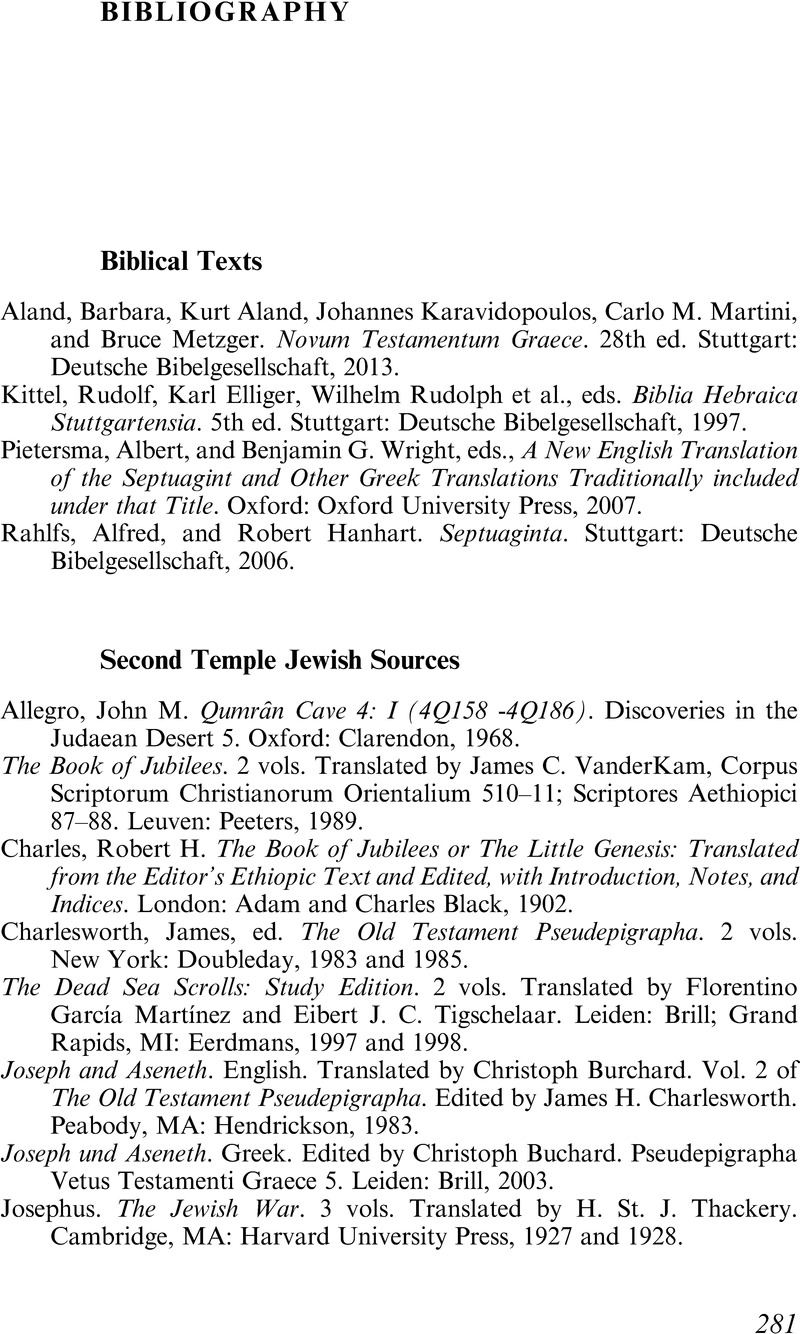Book contents
- Divine Regeneration and Ethnic Identity in 1 Peter
- Society for New Testament Studies
- Divine Regeneration and Ethnic Identity in 1 Peter
- Copyright page
- Dedication
- Contents
- Figures
- Tables
- Acknowledgments
- Note on the Text
- Abbreviations
- Introduction
- 1 Ethnicity Ancient and Modern
- 2 A Field Guide to Metaphors
- 3 The Structure of 1 Peter
- 4 Begotten Anew
- 5 Seed Metaphors in Jewish and Early Christian Literature
- 6 Newborn Babies and Spiritual Milk in 1 Peter 2:1–3
- 7 From House to House of God
- 8 From (Re)Generation to Ethnos
- 9 Conclusion
- Appendix The Language of Rebirth in Rabbinic Judaism
- Bibliography
- Subject Index
- Ancient Sources Index
- References
Bibliography
Published online by Cambridge University Press: 01 June 2022
- Divine Regeneration and Ethnic Identity in 1 Peter
- Society for New Testament Studies
- Divine Regeneration and Ethnic Identity in 1 Peter
- Copyright page
- Dedication
- Contents
- Figures
- Tables
- Acknowledgments
- Note on the Text
- Abbreviations
- Introduction
- 1 Ethnicity Ancient and Modern
- 2 A Field Guide to Metaphors
- 3 The Structure of 1 Peter
- 4 Begotten Anew
- 5 Seed Metaphors in Jewish and Early Christian Literature
- 6 Newborn Babies and Spiritual Milk in 1 Peter 2:1–3
- 7 From House to House of God
- 8 From (Re)Generation to Ethnos
- 9 Conclusion
- Appendix The Language of Rebirth in Rabbinic Judaism
- Bibliography
- Subject Index
- Ancient Sources Index
- References
Summary

- Type
- Chapter
- Information
- Divine Regeneration and Ethnic Identity in 1 PeterMapping Metaphors of Family, Race, and Nation, pp. 281 - 305Publisher: Cambridge University PressPrint publication year: 2022



